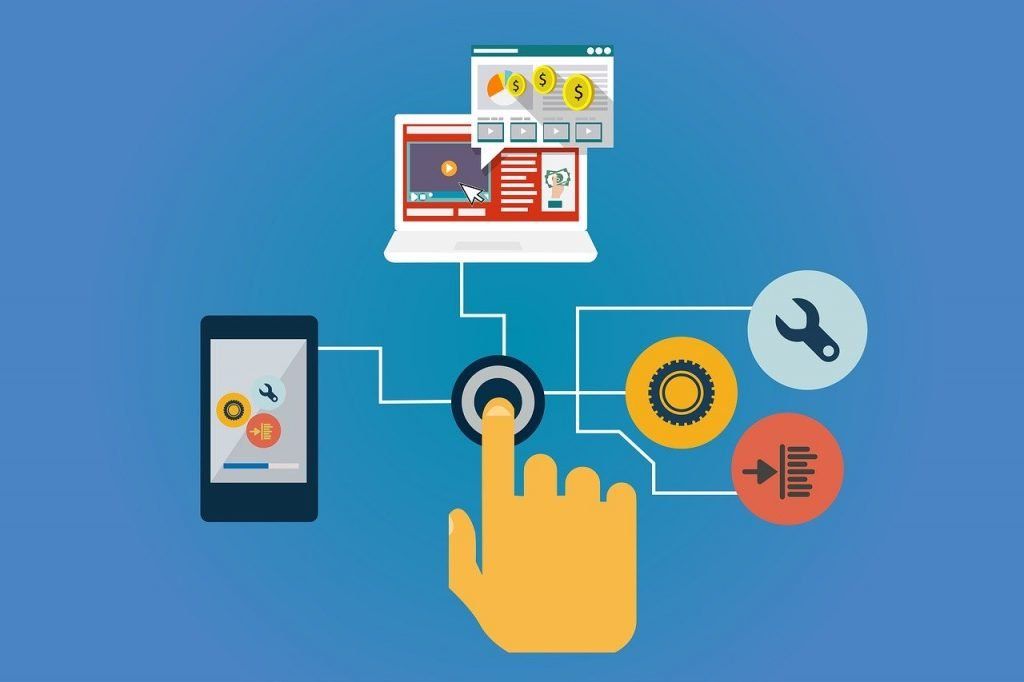Top 10 Types Of Business Models In Android Applications

When developing a plan to generate profits from your mobile application, you are motivated to build a successful business model. In order to build a successful business model for Android applications, one must identify all the important aspects related to development procedures like customer value proposition, market trends, feasibility reports, or even evaluate how much customers are willing to pay for your services( as they compare hundreds of market options).
The world of mobile applications is continually evolving for the better. So, it’s necessary to be clear about the various business models that already exist as they can develop and execute a business model that best fits our technical product.
The development of android applications is a huge business, raking in the huge moolah for entrepreneurs. The whole process of app development involves strategy, development, and launch of the app in a planned way, so basically, its monetization to recover the seed investment.
It’s not easy to select a business model that best fits your business needs perfectly for your application. As an Android developer, you ought to be knowledgeable about how your app market operates to choose the appropriate business model for you. What are your business goals, what are your priorities, you need to take a moment to evaluate whether you want to release your app as a fully paid product, or you want to insert in-app advertising.

A business model is a plan for generating profit for your business. This defines the goods or services the company will offer, the target market it has determined, and the expenditures it envisions. Companies usually develop a business model to make sure that products and services are delivered in the most productive and profitable way possible. Business models can bring benefits if it is implemented and maintained properly by companies. While there are standard business models, proprietors and managers may choose to design their own.
How do you make money with an app? There are several business models to consider. Let’s learn about top business models for Android Applications:
Types of Business Models for Android Applications
There are various business models that can be implemented to monetize an Android application, but it is a difficult choice for app developers. The most popular choices are: selling the app, in-app purchases, subscriptions, freemiums, etc.
Check out here-
1. Paid Application
This business model requires the end-user to pay a specific charge before the applications can finally be downloaded. There is certainly no “Trial” choice. The user needs to make a purchase decision simply by looking at the summary and the screenshots added at the app store. This is a method that can start giving you rapid results.
But in this case, maintaining consumer satisfaction is difficult. Once your application has been paid for and installed by a user but does not generate outcomes as expected by the customer, it is a sure shot of deterioration in customer satisfaction. Consequently, this market model is seeing a gradual decline due to this reason.
2. In-app Purchases

This business model in the Android application has been most widely used throughout the world. These applications are free to use in the beginning but keep introducing advanced features for which you will have to pay later on.
These features would look something like this:
- Unlock additional features
- Remove pop-up ads
- Download something that is needed in the app, etc.
The basic app is free but in some apps, users need to pay for advanced features or goodies. This business model is beneficial as users get to “use” the app before making any kind of purchase. A fair amount of success has been seen in this business model.
3. Affiliate Marketing
This one is also a very popular business model in Android applications, quite frequently used by most entrepreneurs.
Affiliate marketing is a medium to promote the products (or businesses) of many other individuals to earn a commission in return. When you discover a product you are interested in, you can market it to others and earn a profit with every sale that the product makes.
The effect will be seen through your app. If not directly, you can make profits through leads or sales commissions. For example, if you have an Android eCommerce app, you can build an affiliate network that will give you a commission on every product you have sold through the use of the app.
4. Advertising
In modern times, this business model for Android applications for device monetization has seen an increase.
The application is entirely available for free download and use, although the return on investment is recouped by introducing advertising within the application. A Pay Per Click Model or Cost Per Mille (CPM) model is another highly profitable business model for Android apps.
This model is beneficial because your app receives wider access through popular advertising networks, and you only have to pay for what you are benefiting from. If your ad is clicked on or has been displayed 1000 times.
5. Selling Data
Another business model for Android applications involves the sale of extensive data to interested 3rd parties. If the app can produce large quantities of data on consumer desires or behaviors, then this data could be useful for other companies whose goods are focused on what customers want and need. Hence, the app can make money selling off that data.
There are many applications that have been following this business model and making huge profits.
6. Subscription/ SaaS Model

This is a profitable business model for Android applications, where you have to target people who like to use tablets or bigger-screen phones.
Songs apps, tv-series apps, newsletter apps, book apps, and more can be considered for this business model, where you can charge consumers monthly or annually.
If you are thinking about creating your own content, then it could be really difficult and time-consuming. Therefore, try using content from third parties but then be ready for low-profit margins also.
And it’s not going to be that easy to obtain third-party content in terms of closing licensing deals etc., given that it puts pressure on your time and budget. So, crowdsource free content just like YouTube does.
7. Video Advertising
Visual ads play a huge role in attracting customers as people are directly able to relate to what they are seeing. Through this business model for Android applications, you can show more than just your application’s display ads. You can offer users a short but compelling and enticing video of what you do.
Additionally, the application developers can collaborate with advertising companies, to help in the production and display of these short video ads on their apps which will help generate revenue.
8. Freemium
Users don’t have to pay anything in the Freemium business model for Android applications. To install the app and optional in-app purchases for premium features, extra content, or digital goods, no extra costs are charged.
This fundamental approach is easy to understand, where you have to provide all the users with a functional, basic, and completely free version of your product or service. This will convince prospective consumers to become regular customers after a certain time by supplying them with a premium, advanced, feature-rich version at a price.
9. E-Commerce

In the presence of big players such as Amazon, eCommerce apps dominate the highest position among monetization strategies. You can sell your own physical collection or sell other people’s physical collections. The latter would be comparatively less risky than the former.
Undeniably, this working approach has been adopted by many e-commerce platforms. But the profitability of this strategy is relatively low. Why? The type of goods, you are going to sell would be somewhat similar to the ones your competitors would be selling.
10. Virtual Products
One of the game app monetization approaches that are most common for mobile applications is building virtual products. The global marketplace for virtual goods is worth an estimated $15 billion, ranging from animations, stickers, ammunition, and distinctive levels.
Nearly any electronic product can provide virtual goods that can be monetized including video games. For instance, the ultra-famous game known as Pokémon Go. It gives players the ability to buy various kinds of virtual goods such as “PokéCoins.”
To Sum Up
It’s not feasible to monetize by not choosing the right business model for Android applications. Although there are many ways to make money through apps, each model works in a different manner and it’s essential to recognize the best model.
There are still several apps that have failed. Why does this happen? It mostly happens when developers do not know their target market, and their strategies, and have not planned before launching their apps. Also, sometimes they fail to handle the changing business needs of their product.
Hopefully, by now you must have narrowed down your ideal business model for Android applications. It is always recommended to use two different combinations to generate revenue, rather than relying on one particular business model, and keep your eyes open to the changes around by constantly evaluating the performance of your app (to timely adjust the appropriate strategies).
Q1. What is a business model example?
Ans- For instance, direct sales, franchising, advertising-based, and brick-and-mortar stores are all examples of traditional business models. There are hybrid models as well, such as businesses that combine internet retail with brick-and-mortar stores or with sporting organizations like the NBA.
Q2. How revenue is generated from mobile apps?
Ans- In a mobile app, ads are displayed and monetized in multiple ways. CPM - where the app developers are paid for a number of impressions of the ads. CPC - revenue is generated based on the number of clicks delivered through the ads. CPV - earning is based on the number of views by app users.
